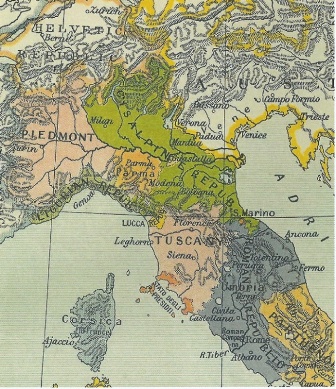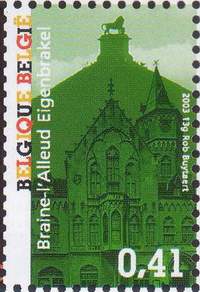Manifestations (préventes, bourses, etc...)
Exposition internationale et bureau temporaire Braphil '15
ROOKE Peter France and Colonies Philatelic Society
Maintaining Napoleon’s Army in the Napoleonic Kingdom of Italy
1796-1814
After the Battle of Lodi in May 1796, the Corsican General, Napoleon Bonaparte, proceeded to organize two states : one to the south of the Po River, the Cispadane Republic, and one to the north, the Transpadane Republic. On May 19, 1797, Napoleon transferred the territories of the former Duchy of Modena to Transpadania and, on Messidor 12 (June 29), he decreed the birth of the Cisalpine Republic, creating a Directory for the Republic and appointing its ministers. France published the constitution of the new Republic on Messidor 20 (July 7), establishing the division of the territory into eleven departments.
The rest of Cispadania was merged into the Cisalpine Republic on July 27, with the capital of the unified state being Milan. On Brumaire 1 (October 22) Bonaparte announced the union of Valtelline with the Republic, after its secession from the Swiss Three Grey Leagues. Austria acknowledged the new entity in the Treaty of Campoformio of October 17, gaining in exchange what remained of the Venetian Republic. On Brumaire 25 (November 15) the full international recognition and legality of the new state was ratified by the law governing the final annexation of the conquered territories.
 The Cisalpine Republic became The Italian Republic in 1802 with Napoleon as its President and this in turn became The Kingdom of Italy with Napoleon as King on March 17, 1805.
The Cisalpine Republic became The Italian Republic in 1802 with Napoleon as its President and this in turn became The Kingdom of Italy with Napoleon as King on March 17, 1805.
The Commissioners of War
On October 6, 1797, a law was published regarding the organization, taks and purposes of the Corps of Commissioners of War in which it was written that they would have an organization composed of a Chief Commissioner Officer, a resident Officer in Milan and a Commissioner for each teritorial division, helped by other Commissioners in sufficient number as required. The Commissioners were to be rated first, second or third class ; the third class was later abolished and the Deputy Commissioner replaced this role.
« The Commissioners of War » was a hierarchy separate from the military ranks – they represented the military government in the administrative part of the army. Commissioners of War were required to administer the funds necessary for the maintenance and service of the fortresses, arsenals and warehouses, barracks and hospitals. They had the power to requisition whatever was needed to service Napoleon’s army from food and fodder to boots and billets. They oiled a very mobile military machine. They were required to provide an exact account of their work to the Ministry of War and were obliged to make an inspection of all military facilities by checking their proper operation at least twice a year.
Article 6 in section IV of the Law stated that official letters of the Commissioners of War were granted the right to free postage, necessitating that such letters be externally marked in order to distinguish them from others. To this end, each Commissioner of War would be provided with a stamp bearing the legend « COMMISSAIRE DES GUERRES » or « COMMISSARIO DI GUERRA ».
The Commissioners of War, in service, had to dress in a uniform of green cloth with scarlet collar, treaded with white, a white waistcoat and coat, a black hat with plumes and the national tricolor cockade and black Hungarian boots. They also had to wear a service medal around their necks on which was engraved « RISPETTO ALLA LEGGE » (Respect for the Law). In the earlier stages these roles tended to be taken by French Commissioners, linked to the Army of Italy, but after the establishment of the Republica Italiana in 1802, Italians frequently fulfilled these roles, as can be seen from the names on the cachets.
 Date : li 2 Gennajo 1807 (Juanuary 2)
Date : li 2 Gennajo 1807 (Juanuary 2)
This pre-printed letter was sent fom Military Hospital in Milan to the Municipal Administrator at Brescello in the Department of Crostolo. It has passed first through the office of Prandina, the Commissario de Guerra, whose cachet appears on the front, and then to Tordoro, the Commissario Ordinatore Centrale, whose cachet appears on both the front and reverse.
The letter is signed by Albinola, the hospital manager. The letter was sent under military frank and inscribed on the front « Servizio Militare » and passed through the post office at REGGIO.

